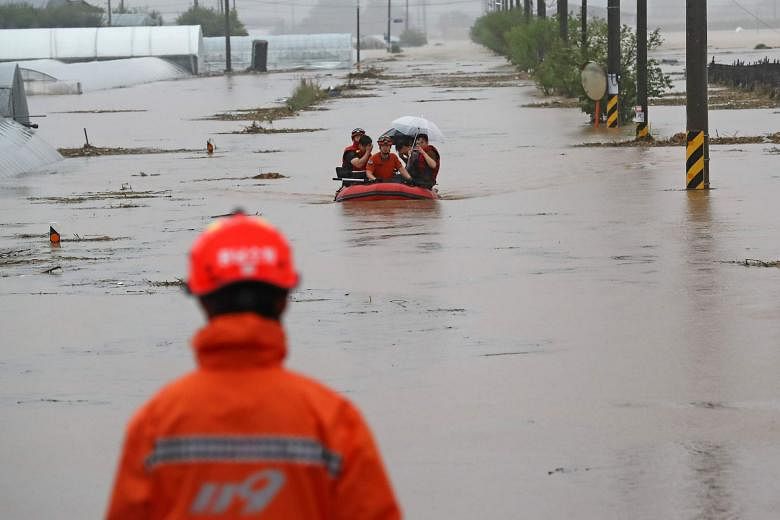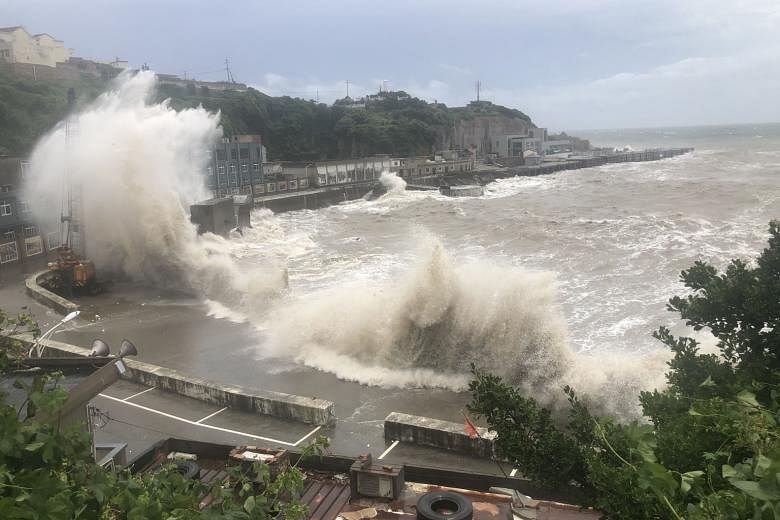SEOUL • The longest spell of monsoon rain South Korea has experienced in seven years triggered floods that have forced over 1,000 people to flee their homes and killed at least 13 people in landslides, as well as swept away cars, the authorities said yesterday.
Heavy rain, which has also battered China, Thailand, Myanmar and India in recent days, inundated farmland and flooded parts of highways and bridges in Seoul.
President Moon Jae-in expressed concern for public workers battling the coronavirus pandemic after 42 days of rain, which weather officials said was the longest such stretch since 2013.
Mr Moon urged all-out efforts by national and regional authorities to prevent further loss of life, such as measures to avert landslides and evacuate people, even in cases of little apparent danger.
Most of the flooded roads and bridges along the Han River in central Seoul that had backed up traffic and damaged infrastructure were back in operation yesterday, the South's Yonhap news agency said.
In neighbouring North Korea, state media warned of possible flooding, saying some areas were also experiencing heavy rainfall.
"All the sectors of the national economy, including the agricultural sector, are taking steps to prevent damage from the downpour," the North's state news agency KCNA reported yesterday, saying that some areas were predicted to get as much as half a metre of rain.
Citing unidentified South Korean government officials, Yonhap said North Korea opened the floodgates of a border dam on Monday without advance notice to its neighbour.
Hagupit, the fourth typhoon of the year, landed in eastern China's Zhejiang province in the wee hours of yesterday, the National Meteorological Centre said.
Typhoon Hagupit landed on the coastal areas of Yueqing city under Wenzhou at around 3.30am.
It brought torrential rain to Zhejiang and Fujian provinces. By 10pm on Monday, Zhejiang had evacuated over 380,000 people. Some train services and construction work in Fujian were halted.
The meteorological centre forecast that the typhoon will track north and pass through Zhejiang, with its intensity gradually weakening. It was expected to leave Zhejiang last night and enter the western Yellow Sea via northern Jiangsu today, before moving towards the western coast of the Korean peninsula.
REUTERS, XINHUA


